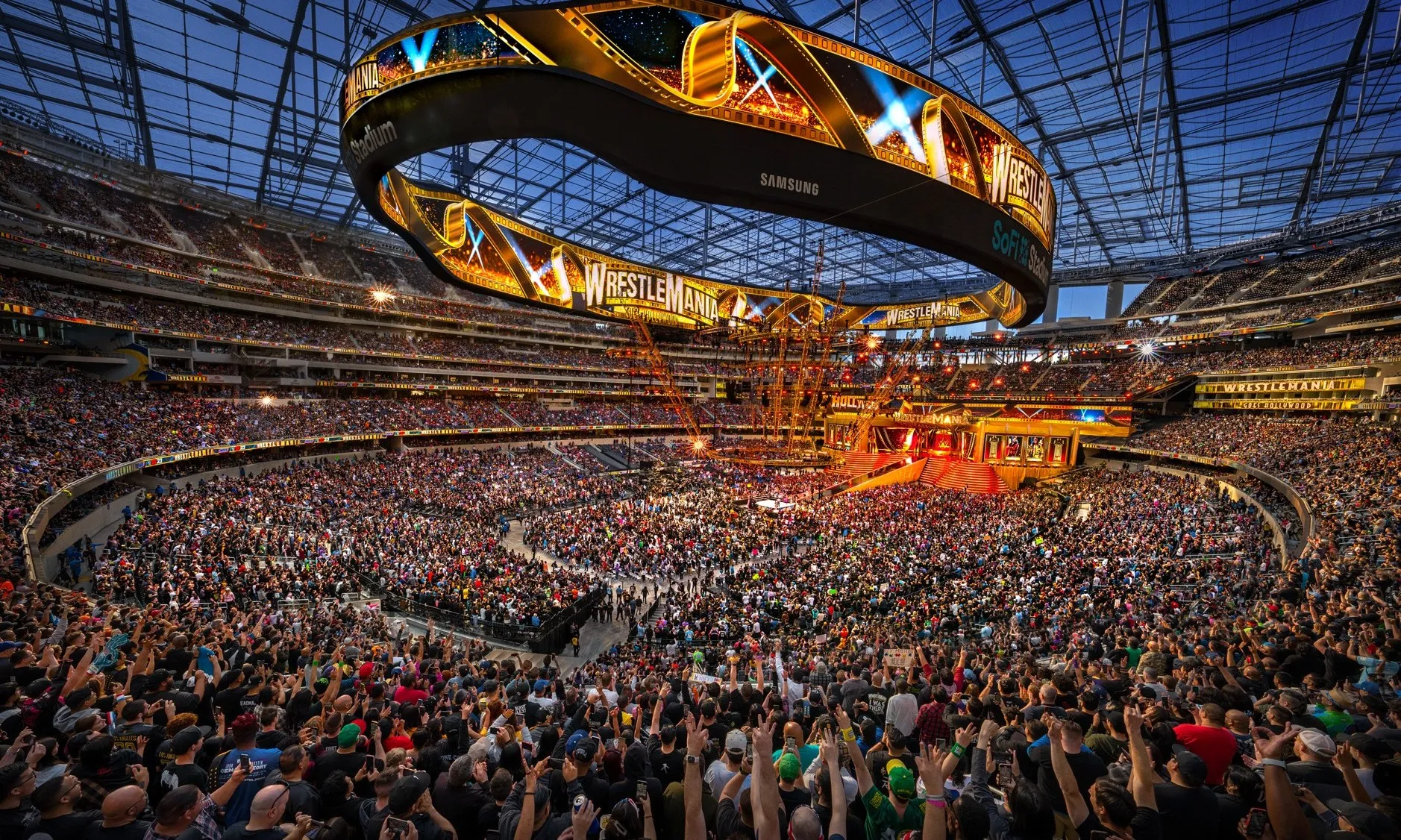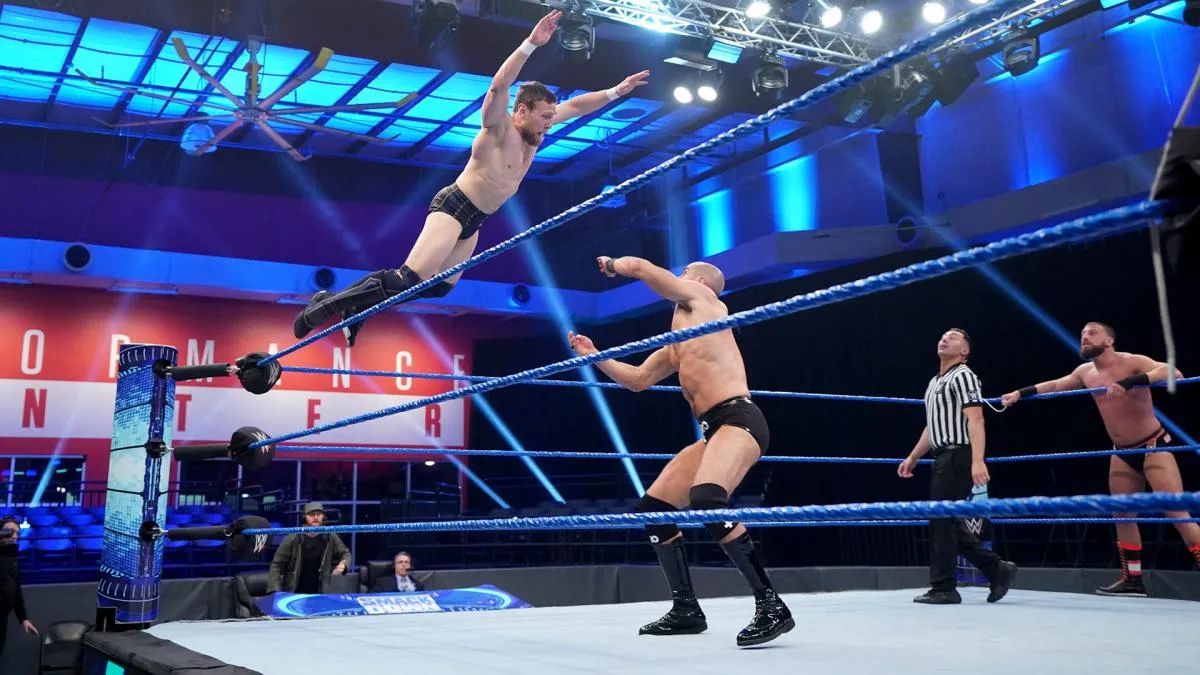As one of the most popular forms of entertainment, professional wrestling has captured the hearts and minds of millions of fans all over the world. And for decades, World Wrestling Entertainment (WWE) has been the undisputed leader in the industry, with a loyal fan base and a global reach.
However, with the rise of digital media and changing consumer preferences, the landscape of wrestling viewership has undergone a significant transformation in recent years. In this article, we will dive deep into the latest WWE viewership statistics, uncovering the key trends and factors that have shaped the current state of the industry. So, let’s take a closer look at how the world of pro-wrestling is evolving and what it means for WWE and its fans.
1. The Impact of Digital Media on WWE Viewership

With the proliferation of smartphones and the widespread availability of high-speed internet, the consumption of media content has changed dramatically in the last decade. And for sports entertainment companies like WWE, this shift has had both positive and negative consequences.
The Rise of WWE Network and Streaming Services
In 2014, WWE launched its streaming service, WWE Network, which allowed fans to access live and on-demand content at a monthly subscription fee. This move was seen as a game-changer for the company, as it gave them more control over their content and revenue streams. As a result, WWE’s TV rights fees increased significantly, and the network contributed to a steady growth in the company’s revenues.
Moreover, the network also provided a convenient and cost-effective way for fans to access WWE programming, especially in international markets where the company’s TV presence was limited. This helped to expand the WWE audience globally, boosting viewership numbers and creating new revenue opportunities.
The Decline of Traditional Television Ratings
On the flip side, the rise of digital media has also contributed to a decline in traditional television ratings for WWE programming. With more and more people cutting the cord and switching to streaming services, the viewership numbers for WWE’s flagship shows like Raw and SmackDown have been on a downward trend.
Moreover, the rise of streaming platforms like Netflix and Amazon Prime has resulted in stiffer competition for TV networks, making it harder for WWE to secure lucrative TV deals. This has forced the company to focus more on its streaming service and other digital platforms to reach its audience, which has had an impact on overall viewership numbers.
The Changing Viewing Habits of WWE Fans
Another factor that has impacted WWE viewership is the changing viewing habits of the company’s target audience. With a majority of WWE fans falling in the 18-34 age bracket, they are more likely to be tech-savvy and consume content on digital platforms.
This has led to a shift in how fans engage with WWE programming, with many choosing to watch highlights and clips on social media or streaming platforms instead of tuning in for the entire show. This has made it challenging for the company to accurately measure its viewership numbers and has resulted in a decrease in average viewers per episode.
2. The Impact of Live Events on WWE Viewership
Live events have always been a crucial aspect of WWE’s business model, providing fans with an opportunity to experience the action and drama of professional wrestling in person. And while live events continue to be a significant revenue stream for the company, their impact on viewership has been somewhat mixed.
The Decline of Pay-Per-View Buys
Traditionally, pay-per-view (PPV) events were a major draw for WWE fans, with the company charging a premium price for access to marquee matches and storylines. However, with the rise of WWE Network, which includes all PPV events in its subscription package, the number of PPV buys has declined significantly.
This has had a direct impact on viewership numbers for PPV events, as many fans now choose to watch these shows on the streaming service instead of purchasing them separately. Moreover, with WWE introducing more PPV events and increasing the number of live shows on its network, the exclusivity and excitement of these shows have diminished, resulting in a decrease in overall viewership.
The Impact of Live Events on TV Ratings
Apart from PPV events, WWE also hosts numerous live events throughout the year, including house shows and televised specials. And while these events are a significant revenue source, they have not always translated into higher TV ratings.
In fact, there have been instances where hosting live events has resulted in a decline in TV ratings for WWE programming. This is because some fans may choose to attend the live event instead of watching it on TV, resulting in a decrease in average viewers per episode. However, live events can also boost engagement among fans and create buzz around storylines, which can ultimately lead to higher TV ratings in the long run.
The Role of Social Media in Promoting Live Events
With the rise of social media platforms like Twitter and Instagram, WWE has leveraged these channels to promote its live events and engage with fans. Through live tweets, exclusive behind-the-scenes content, and fan interactions, WWE has managed to build a loyal community of followers who tune in to their live events and other programming.
Moreover, social media has allowed WWE to reach a broader audience and generate buzz around its events, which has helped to drive viewership numbers. So, while live events may not always result in higher TV ratings, they play a crucial role in building a strong brand and creating a loyal fan base, which can be leveraged to boost viewership over time.
3. The Impact of Storylines and Talent on WWE Viewership

One of the most critical factors that determine WWE’s viewership numbers is the quality of its storylines and the talent involved in them. A captivating storyline can keep fans hooked to their screens and create a buzz around the company, resulting in higher ratings and viewership.
The Role of Storylines in Driving Viewership
For decades, WWE has thrived on its ability to create engaging and often outrageous storylines that have captured the imagination of fans. From larger-than-life characters to intense rivalries, these storylines have been the backbone of WWE programming and have played a crucial role in driving viewership.
However, in recent years, there has been a decline in the quality of storytelling in WWE, which has resulted in a drop in viewership numbers. With fans becoming more critical of predictable and poorly executed storylines, the company has struggled to maintain the same level of engagement among its audience, leading to lower ratings and viewership for its shows.
The Impact of Talent on Viewership
Apart from storylines, the wrestlers themselves also play a vital role in drawing viewership for WWE programming. Superstars with charisma, in-ring skills, and larger-than-life personalities have always been fan favorites, and their presence can significantly impact TV ratings and viewership numbers.
However, in recent years, WWE’s reliance on part-time and aging superstars like Brock Lesnar and Goldberg has drawn criticism from fans, who feel that it takes away opportunities from up-and-coming talent. This has resulted in a decline in interest among fans, especially the younger demographic, leading to lower viewership numbers for the company’s flagship shows.
The Impact of Talent Movement and Brand Split on Viewership
In recent years, WWE has introduced the brand split concept, where the company’s roster is divided into two separate brands – Raw and SmackDown. This move was aimed at creating competition and boosting viewership for both shows.
However, frequent talent movement between the two brands and the inclusion of part-time superstars in both rosters has diminished the impact of the brand split. As a result, this strategy has not had a significant impact on overall viewership numbers for WWE programming.
4. The Impact of International Expansion on WWE Viewership
With a global fan base and a strong presence in international markets, WWE has been actively expanding its operations in various countries, including India, China, and the Middle East. However, this expansion has had varying results when it comes to viewership and audience engagement.
The Rise of International Audiences
WWE has always had a loyal fan base outside the United States, with fans from countries like Canada, UK, and Mexico contributing significantly to the company’s viewership numbers. And with the rise of streaming services and social media, WWE has been able to reach an even broader international audience, boosting its overall viewership.
Moreover, WWE’s focus on international expansion has also resulted in numerous live events and TV tapings in different countries, creating new revenue opportunities and driving interest among local fans. This has helped to grow WWE’s global audience and increase viewership numbers for its programming.
Challenges in Penetrating New Markets
While WWE’s international expansion has been successful in some regions, the company has faced challenges in penetrating new markets. For instance, despite its efforts to break into China, the company has not been able to secure a TV deal in the country due to strict regulations and competition from other sports leagues.
Similarly, in markets like India, where WWE has a significant following, the company has struggled to translate that into higher viewership numbers. This is primarily due to a lack of accessibility to WWE programming and the popularity of regional wrestling promotions in the country.
The Impact of Cultural Sensitivities on Programming
Another factor that has impacted WWE’s international expansion is the need to cater to different cultural sensitivities in different markets. For instance, in the Middle East, where WWE has a strong presence, the company has had to tone down its content and change storylines to avoid offending local sentiments.
This has resulted in a significant impact on its programming, as some of WWE’s most popular characters and storylines are not suitable for international audiences. This has also led to a decline in interest among global fans, who may feel that the product is not as exciting or edgy as before.
5. The Impact of Competition on WWE Viewership
For decades, WWE has been the undisputed leader in the world of professional wrestling, with little to no competition from other major promotions. However, with the rise of independent wrestling promotions and the emergence of new companies like All Elite Wrestling (AEW), the landscape of sports entertainment has become more competitive than ever.
The Emergence of Independent Promotions
In recent years, there has been a significant rise in the number of independent wrestling promotions, which have found success by catering to niche audiences and providing an alternative to WWE programming. These promotions, such as Ring of Honor and New Japan Pro Wrestling, have developed a loyal fan base and have been able to attract top talent from WWE.
Moreover, with the rise of streaming services and social media, these independent promotions have found it easier to reach their target audience and promote their shows. This has resulted in a decline in viewership for WWE programming, as some fans may choose to watch these alternatives instead of WWE’s flagship shows.
The Rise of All Elite Wrestling (AEW)
One of the biggest competitors to WWE in recent times has been AEW, which was launched in 2019 by Tony Khan, with financial backing from billionaire Shahid Khan. With a mix of established stars and up-and-coming talent, AEW has quickly gained popularity among hardcore wrestling fans and has put up a tough fight against WWE.
While AEW is still a relatively new company, it has managed to attract top talent from WWE and has secured a lucrative TV deal with TNT. This has resulted in heated competition between the two promotions, with AEW consistently drawing higher ratings and viewership for its weekly show, Dynamite. This has forced WWE to step up its game, resulting in more significant changes to its programming and storylines.
The Impact of Competition on WWE’s Strategy
The rise of competition in the world of professional wrestling has had a significant impact on WWE’s strategy, forcing the company to make significant changes to its programming and business model. For instance, WWE has introduced NXT as a third brand, in response to AEW’s success, and has also started signing top independent talent to prevent them from joining other promotions.
Moreover, WWE has also shifted its focus to creating unique and edgier content, which can help to retain fans and compete with other promotions. This renewed focus on storytelling and innovation has had a direct impact on viewership numbers, with WWE seeing a slight increase in ratings and viewership in recent months.
6. The Impact of COVID-19 on WWE Viewership

The outbreak of the COVID-19 pandemic in early 2020 had a severe impact on the sports entertainment industry, with WWE being no exception. With live events canceled, TV tapings held without fans, and the absence of international tours, the company’s operations were significantly affected, resulting in a decline in viewership numbers.
The Impact of No Fans on Live Shows
One of the most significant challenges that WWE faced during the pandemic was holding live shows without fans. While some may argue that the lack of a live audience allows the company to focus more on storytelling and in-ring action, there is no denying the fact that the energy and excitement of a live crowd have always been a crucial aspect of WWE programming.
Moreover, without the presence of fans, some storylines and characters may not have the same impact, resulting in a decline in interest among viewers. This has been reflected in WWE’s ratings and viewership, with some shows experiencing record-low numbers during the pandemic.
The Impact of Canceled Live Events
Live events are an essential aspect of WWE’s business model, and their cancellation during the pandemic resulted in significant revenue losses for the company. Moreover, these live events also play a role in promoting and building storylines, and their absence has had an impact on the quality of programming and viewership numbers.
Furthermore, with no international tours, WWE has not been able to capitalize on its global fan base, which has resulted in a decrease in viewership from markets like India and the Middle East. This has further impacted the company’s ratings and viewership during the pandemic.
The Role of Digital Platforms During the Pandemic
While the pandemic has had a negative impact on traditional TV ratings, it has also presented an opportunity for WWE to engage with its audience through digital platforms. With more people staying at home and consuming content online, WWE has focused on creating unique and exclusive content for its streaming service and social media channels, which has helped to retain and grow its audience.
Moreover, WWE has also leveraged digital platforms to promote its live events and TV tapings, which has resulted in higher engagement levels and viewership numbers. This has been a crucial strategy for the company during the pandemic, as traditional forms of promotion and marketing were limited due to restrictions and canceled events.
Conclusion: The Changing Landscape of WWE Viewership
In conclusion, the world of professional wrestling has undergone significant changes in recent years, with new forms of media, changing consumer preferences, and increased competition impacting WWE’s viewership numbers. While the company continues to be the leader in the industry, it faces numerous challenges as it tries to adapt to the changing trends and keep its audience engaged.
Moreover, with the future of live events uncertain and the rise of new technologies like virtual reality and augmented reality, the landscape of WWE viewership is likely to change even further in the coming years. However, one thing is for sure – as long as there are fans who enjoy sports entertainment, WWE will continue to evolve and thrive, providing us with exciting and entertaining programming for years to come.






